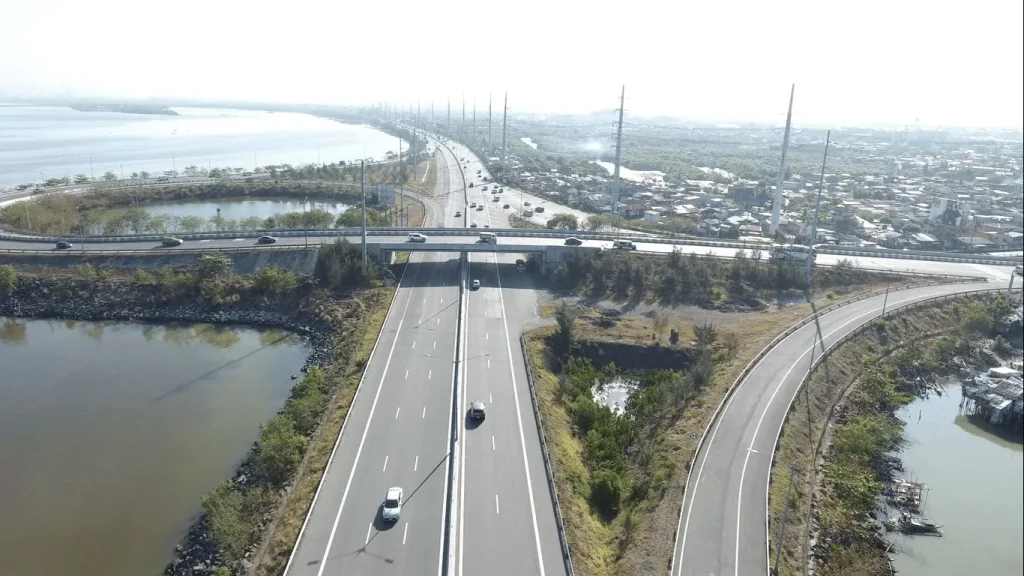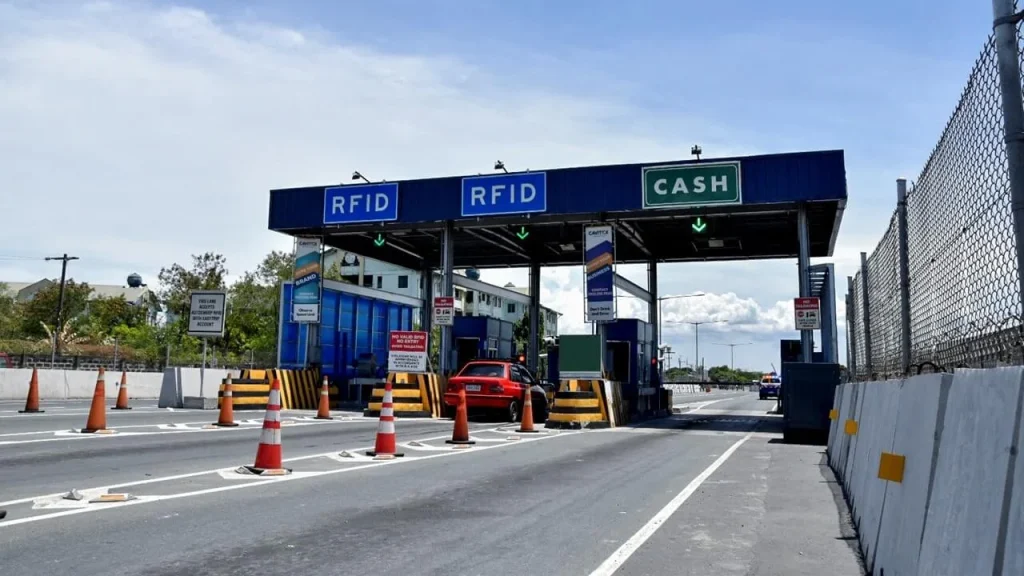If you’ve ever traveled from Metro Manila to your house and lot for sale in Cavite, you have likely traveled through the CAVITEX at least once, not because of chance, but because the CAVITEX was built for that purpose. The CAVITEX was the result of a progressive upgrading of roads between the Metro Manila and Cavite region, resulting in the CAVITEX we know today.
What is the CAVITEX?
The name CAVITEX comes from its full name Manila-Cavite Expressway. Facilitated by the Public Estates Authority Tollway Corporation (PEATC), the CAVITEX falls under the classification of R-1 of Metro Manila’s arterial road network, serving as a network of roads that connect the cities of Imus, Kawit, Bacoor, General Trias, Las Pinas, Noveleta, Pasay, Paranaque, and Tanza in Cavite, and Manila. With a length of 14 kilometers, 4 lanes, 3 highway exits, and 2 toll plazas, the CAVITEX contributes to increased activity in working sectors and economic growth.

Photo from mb.com.ph
What Is the Purpose Of CAVITEX?
Furthermore, CAVITEX carries a series of water pipelines and power lines among the cities of Las Pinas and Paranaque. Along the CAVITEX, there are Maynilad water pipelines and Meralco sub-transmission lines installed. The Las Pinas substation of the National Grid Corporation of the Philippines and the last section of the Dasmarinas-Las Pinas Transmission Line is installed across the CAVITEX as well.
Hence, the CAVITEX provides safe and faster access between the NCR and CALABARZON region by connecting Metro Manila and the southern province of Cavite. Moreover, the CAVITEX not only serves as a major transportation route, but also serves as a significant utility corridor that distributes energy and water to nearby cities, including your house and lot for sale in Cavite.
The Routes of CAVITEX
Most of the entire expressway or CAVITEX route comprises a road that curves along Manila Bay’s southwestern shore. It is because of this that the name “Coastal Road” has been used synonymously with the CAVITEX. The starting terminal of the CAVITEX can be pinpointed at a traffic light intersection located at NAIA Road, New Seaside Drive within Barangay Tambo, and Roxas Boulevard.
Once this intersection is passed the CAVITEX route will pass another intersection located at Pacific Avenue, followed by an access point found northbound coming from Kabihasnan within Paranaque; and past this area, the Paranaque toll plaza is reached where toll fees are collected from motorists coming southbound from the toll plaza.
Upon passing the Paranaque toll plaza, the province of Cavite is reached via the Bacoor exit, leading to your house and lot for sale in Cavite. Beyond the Bacoor exit, the CAVITEX “becomes a four-lane dual carriageway on reclaimed land built on the shores of seaside barangays of Bacoor.” The terminal or end of the CAVITEX route located in Kawit is a box intersection between Covelandia Road, Tirona Highway, and Antero Soriano Highway. It is at this end of the CAVITEX that an undergoing development of the Cavite-Laguna Expressway is being conducted; so a Kawit toll plaza may be established in this area.

Photo from auto.yugatech.com
What Is the Toll System For CAVITEX?
The CAVITEX is facilitated by the Metro Pacific Tollways Corporation (MPTC) and the PEATC, which means that the CAVITEX has its own CAVITEX toll fees or Cavite toll expressway project that is approved by the official toll regulatory board authorities.
Given this, the toll system of CAVITEX is implemented in the interchanges installed along the CAVITEX where motorists pay toll fees that follow flat toll rates according to vehicle class. The south terminal of CAVITEX located in Bacoor, Cavite, has been changed into a full trumpet interchange, leading to having two toll barriers on the south terminal of the CAVITEX; these are the toll barrier in Paranaque and the extension barrier located in Kawit. Hence, if you are traveling from Manila to your house and lot for sale in Cavite, you will have to go through these toll barriers.
Using a toll barrier system, CAVITEX toll fees are collected in the Kawit toll plaza and Paranaque toll plaza. Although, there is no toll fee collection at the exit points of toll barriers in the CAVITEX, excluding the Paranaque and Kawit toll plazas. At present, the CAVITEX has a relatively new toll fee matrix that utilizes Radio-Frequency Identification System (RFID) called Easytrip RFID, which serves as an alternative for paying at the cash lanes of toll plazas.
Check Out Our House and Lot Properties in the South!
A Brief Overview of CAVITEX’s History
Roxas Boulevard
Prior to CAVITEX’s construction, a plan was created by Architect Daniel Burnham called “Cavite Boulevard,” which aimed to link the province of Cavite and the city of Manila. This initial plan aimed to build Cavite Boulevard on reclaimed land that spanned 32 kilometers across Luneta, Manila, to Cavite Navy Yard. The execution of this plan resulted in what is now called the Roxas Boulevard, which reached up to Paranaque City only.
Aguinaldo Boulevard
Traffic congestion then became a prevalent issue within the roads coming from Paranaque and Las Pinas towards neighboring provinces, with Cavite in particular. As a solution to this problem, the government created plans of developing a major road network that would connect Roxas Boulevard to the Southern Tagalog provinces and Metro Manila. Consequently, it was in the 1970s that a 6.6-kilometer 4-lane road called Aguinaldo Boulevard was developed; however, the road ended up degrading fast, leading to a need for an upgrade.
The CAVITEX
As a result, plans for a new expressway were made between the government acting through the Toll Regulatory Board, UEM-Mara Philippines Corporation, and the Public Estates Authority, assigning the PEATC for facilitating the development of a new expressway that would be called the CAVITEX. Because of the development of the CAVITEX, travel from Metro Manila to your house and lot for sale in Cavite has been made a lot more convenient.
Ongoing and Future Developments for CAVITEX
There are some developments being made to improve or upgrade the service provided by CAVITEX. Examples include a link between the C-5 road and the CAVITEX, which is a 7.7-kilometer 6-lane road that would connect Taguig to the CAVITEX. Moreover, the development of a flyover across the C-5 road in Taguig and the C-5 road extension in Pasay over the SLEX and Skyway are included. Another example is a plan to develop a link between CAVITEX near Pacific Avenue to the NLEX Harbor Link located in Navotas via a 6-lane expressway.


